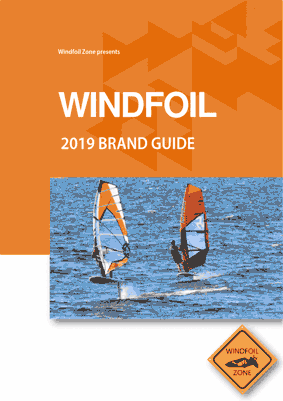Which Windfoil Should I Buy, Carbon foil or Aluminium foil?
- Romain
- Jul 14, 2019
- 4 min read
Following our article about carbon hydrofoils , this has been one of the most frequently asked questions we received and so we wanted to cover this subject and answer the question in the blog.
Many new windsurfing hydrofoils, both aluminium foils and carbon foils, have been launched within the past 2 years, and this gives you many different choices when choosing your windfoil.
Starboard team set: a foil set with a mix of foil elements in aluminium and carbon, giving different foiling configurations.
So which foil should you choose, aluminium or carbon hydrofoil?
A simplified reality is that aluminium foils are cheaper but slower, heavier and demand more maintenance than carbon foils. Carbon foils are more expensive, but faster and provide a better foiling feeling when “slicing” through the water and offer better overall performance than aluminium foils.
One year ago, I would have answered the question by simply saying that it depends on your budget as generally speaking carbon foils are more expensive than aluminium foils. So if you have a limited budget, an aluminium foil would be the best solution, but if you can afford it, choose a carbon foil.
However, times have changed and there are several other factors to think about now, which may influence your choice.
Some of the most popular aluminium foils
Here are some aspects you should consider before buying your foil:
The price of course:
Aluminium is cheaper than carbon, that’s a fact. But we now see some hybrids, with aluminium masts and fuselage combined with carbon wings (for example: Starboard, Alpinefoil, Horue, Mantafoils…) which could be a good compromise if you are hesitating between aluminium and carbon foils.
Hybrid foils carbon wings / aluminium masts or fuselage
You could also consider buying a foil from smaller brands, which don’t have the same cost structure as the big brands. They often sell directly without the middle man, they don’t have huge overhead or marketing costs, and can therefore offer quality carbon foils at highly competitive prices (for example: Aeromod, Bug foils …). The price gap between aluminium foils and carbon foils is being reduced thanks to these competing brands with high value for money.
Aeromod and Bug, 2 small brands offering quality carbon foils with high value for money
Last thing to consider when it comes to the price of the foils: Windfoils have been sold on the market since 2017, and the second hand market is now growing. Check out Facebook groups, local shops or other second hand market places and you may find a good second hand carbon foil near you at the price of a new aluminium foil.
Knowing that carbon foils have a longer life time and are easy to repair, it may be worth considering buying a used carbon foil rather than a new aluminium foil.
The usage:
What is your windfoiling style? You may have different needs depending of your goal with windfoiling. (You can read this post to learn more about the 4 main windfoiling styles)
For example, if you wish to foil quietly back and forth when the conditions are too light to windsurf, you may not need to buy the latest race carbon foil. A good aluminium foil may be sufficient, as you are not looking for optimum performance, pushing the limits, but just having fun on light wind days.
Aluminium foils are generally speaking not as fast as carbon foils, but they are often easier to learn on and offer great stability thanks to their weight.
The place
Where are you going to foil? One of the biggest drawbacks of aluminium foils is that they corrode easily, especially in a salty water environment. You may prefer carbon versus aluminium if you mainly foil in the sea, but you also might be satisfied with an aluminium foil if you foil on a lake.
In the video below, you'll get some good tips from Tony Logosz of Slingshot to maintain your aluminium foil:
Another aspect is the durability of the foil. Carbon is solid but gets easily damaged by small impacts on the rocks. Aluminium is more impact-resistant than carbon. As it’s not unusual to hit the sea floor with the foil when retuning to the beach, you may consider to use either carbon or aluminium depending on the sea ground: rocky or sandy.
It’s especially something to think about if you know that you will have a couple of inexperienced friends who will want to borrow your foil to try out!
To sum up, here are some of the main advantages and drawbacks of each type of foil:

For the different reasons mentioned above, it is difficult to give a standard recommendation on which foil to choose.
Your budget will of course have an importance in your choice, but the goal you want to achieve with windfoiling may be just as important. There is no shame in using aluminium foils, as their performance is constantly improving and they bring lots of fun.
However, after trying a carbon foil, you may never want to go back…
Contact us if you have any questions, we're happy to help you out of the foil jungle and give you some advice before choosing the right foil for you!
































Comments